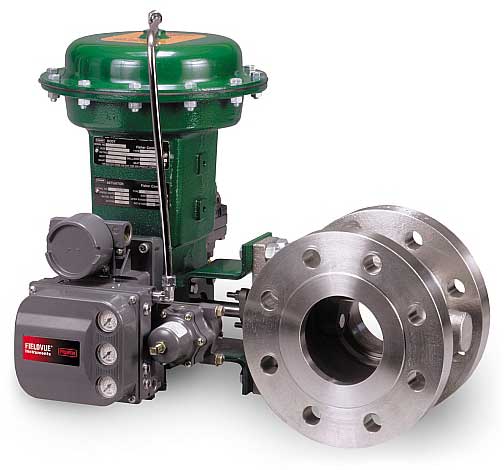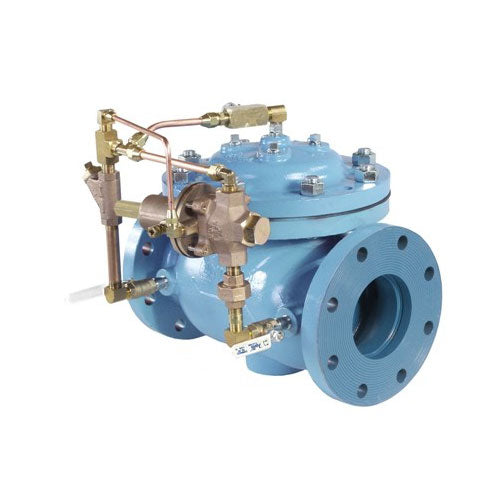Understanding the Significance of Control Valves in Process Automation
Wiki Article

Maximize Energy Financial Savings and Convenience With Advanced Building Automation Controls
In the world of contemporary style and facility administration, the assimilation of sophisticated structure automation controls stands as an essential development. By using the power of automation, buildings can adapt, respond, and advance in methods that were once unbelievable.Energy Efficiency Perks
Power efficiency benefits can dramatically decrease power consumption and operational expenses in buildings. By applying energy-efficient techniques and technologies, building owners and drivers can attain considerable savings while also adding to environmental sustainability. One of the main advantages of enhancing energy effectiveness in structures is the decrease of utility expenses. Energy-efficient systems, such as sophisticated structure automation controls, can enhance using sources like home heating, lights, and air conditioning, resulting in reduced power expenditures over time.Furthermore, enhanced power effectiveness can prolong the life-span of building equipment and systems. By running a lot more efficiently, HVAC systems, lighting fixture, and various other building parts experience less wear and tear, causing decreased upkeep and substitute costs. In addition, energy-efficient buildings typically command higher residential or commercial property values and rental prices, supplying long-term economic benefits to owners.
Furthermore, energy efficiency can boost resident convenience and efficiency. Properly controlled indoor settings with ideal lights and thermal conditions develop a more conducive and positive office, causing enhanced employee satisfaction and efficiency. In general, the power performance benefits related to sophisticated building automation controls are multifaceted, encompassing expense savings, environmental stewardship, and resident health.
Boosted Comfort Control
Enhancing comfort control in structure atmospheres needs an advanced integration of innovative automation systems for ideal passenger well-being. By making use of advanced structure automation controls, facilities can customize the interior environment to meet the particular demands and choices of passengers. control valves.By including these sophisticated controls, structures can not only enhance convenience but additionally enhance power effectiveness by optimizing system procedures based on actual occupancy and usage patterns. Ultimately, focusing on resident comfort with sophisticated automation systems leads to a more enjoyable and healthier interior environment.
Functional Effectiveness Improvements

Furthermore, the execution of real-time tracking and analytics tools makes it possible for building drivers to determine energy inefficiencies and functional anomalies without delay. By constantly keeping track of power usage patterns and system efficiency metrics, adjustments can be made in real-time to optimize power intake and make sure peak functional efficiency. control valves. Furthermore, incorporating demand reaction strategies right into building automation controls can further improve operational efficiency by dynamically changing power use based upon grid conditions and rates signals
Indoor Climate Optimization
Effective interior climate optimization is an essential facet of structure automation controls, making sure owners' comfort and wellness while taking full advantage of energy cost savings. By utilizing sophisticated sensing units and controls, constructing automation systems can continuously adjust and monitor temperature level, humidity levels, air top quality, and ventilation to create an ideal indoor setting. Maintaining consistent and comfortable conditions not just enhances occupant complete satisfaction however likewise increases productivity and overall well-being.Indoor environment optimization additionally plays an essential role in energy efficiency. By fine-tuning cooling, heating, and ventilation systems based on real-time data and occupancy patterns, building automation controls can considerably minimize energy usage look at this now - control valves. As an example, implementing techniques such as demand-controlled air flow and thermal zoning can help minimize energy waste while making sure that each location of the structure receives the required conditioning.

Lasting Setting Creation
Building automation manages not only enhance interior climate problems for power efficiency and passenger convenience but also lay the foundation for creating a lasting atmosphere with critical monitoring of systems and resources. By integrating sophisticated building automation technologies, such as sensors, actuators, and smart software program, centers can readjust and check power usage in real-time to minimize waste and lower their carbon impact. These systems allow predictive upkeep, determining possible concerns prior to they escalate and optimizing Your Domain Name tools efficiency to boost durability and effectiveness.In addition, lasting environment development expands beyond power monitoring to incorporate water preservation, waste reduction, and interior air top quality enhancement. Building automation controls can control water use, spot leaks, and make certain proper garbage disposal techniques, adding to total sustainability initiatives. In addition, by checking and managing air flow and purification systems, these innovations enhance owner health and productivity while decreasing power consumption connected with heating and cooling procedures.
Conclusion
Finally, advanced building automation regulates offer substantial benefits in regards to energy savings, comfort control, operational performance, interior climate optimization, and developing a sustainable setting. By implementing these controls, structures can achieve ideal efficiency while minimizing energy usage and boosting resident convenience. It appears that making use of sophisticated automation modern technology is important in improving building performance and developing an extra sustainable future.Energy efficiency benefits can significantly minimize power consumption and operational costs in buildings. Generally, the power effectiveness advantages linked with advanced building automation controls are diverse, incorporating price savings, ecological stewardship, and occupant well-being.
Additionally, incorporating demand action strategies right into building automation controls can better boost functional pop over to this site effectiveness by dynamically adjusting energy use based on grid problems and prices signals.
Building automation manages not only optimize indoor environment problems for energy efficiency and occupant convenience yet likewise lay the foundation for developing a lasting setting with tactical monitoring of sources and systems.In final thought, progressed building automation regulates offer substantial benefits in terms of energy financial savings, convenience control, operational efficiency, interior climate optimization, and developing a lasting environment.
Report this wiki page